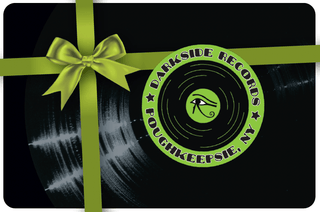Pedro Piquero- Turina: Piano Works

Three vividly picturesque piano suites, evoking the colours and rhythms of Spanish life, in a new recording by a native artist trained within the long and distinguished Spanish piano tradition. Pedro Piquero trained with the Spanish pianist Esteban Sanchez, who had himself studied with Alfred Cortot before returning to his native Spain to pass on his insights into the kind of repertoire recorded here. Brilliant Classics issued a box of Sanchez's recordings of Albeniz, and this new recording of Turina's music by his former student forms a fitting sequel. The piano lay at the centre of Turina's life and work, as it did for his near contemporary Maurice Ravel. The piano became the expressive complement to the other instrument that accompanied Turina for most of his life: the camera. An amateur photographer, with an impeccable eye, he captured "objective" images with his camera and then "subjectivised" them in his music. Seville, his native city, was always with him, whether in presence or in essence, and was his most frequent source of inspiration, starting with his second published work. This 'painterly suite' in three movements takes extended snapshots of an orange grove; a prayerful night-vigil shortly before the Easter festivities; and then the celebrations of the Easter fair itself. Writing the suite in Paris in 1908, Turina describes in Debussyan style not so much the picturesque details of his chosen scenes, but the way he remembers them from far away. Expression reigns over illustration. In just the same way, the opening 'Exaltacion' of the Danzas fantasticas, encapsulates his relationship with Spanish folk music: evocation, rather than quotation or re-creation. After the atmospheric introduction, Turina conjures the jota, but his own version of the dance - as is also true of the seguidilla in the central section. This Op.22 set of dances, composed in 1919, became best known in Turina's later orchestration, but a pianist as capable as Pedro Piquero can evoke a palette of orchestral colours on the piano. One Spanish musicologist has described the Cinco danzas gitanas, composed in 1929, as 'unquestionably one of [Turina's] pianistic masterpieces.'
Three vividly picturesque piano suites, evoking the colours and rhythms of Spanish life, in a new recording by a native artist trained within the long and distinguished Spanish piano tradition. Pedro Piquero trained with the Spanish pianist Esteban Sanchez, who had himself studied with Alfred Cortot before returning to his native Spain to pass on his insights into the kind of repertoire recorded here. Brilliant Classics issued a box of Sanchez's recordings of Albeniz, and this new recording of Turina's music by his former student forms a fitting sequel. The piano lay at the centre of Turina's life and work, as it did for his near contemporary Maurice Ravel. The piano became the expressive complement to the other instrument that accompanied Turina for most of his life: the camera. An amateur photographer, with an impeccable eye, he captured "objective" images with his camera and then "subjectivised" them in his music. Seville, his native city, was always with him, whether in presence or in essence, and was his most frequent source of inspiration, starting with his second published work. This 'painterly suite' in three movements takes extended snapshots of an orange grove; a prayerful night-vigil shortly before the Easter festivities; and then the celebrations of the Easter fair itself. Writing the suite in Paris in 1908, Turina describes in Debussyan style not so much the picturesque details of his chosen scenes, but the way he remembers them from far away. Expression reigns over illustration. In just the same way, the opening 'Exaltacion' of the Danzas fantasticas, encapsulates his relationship with Spanish folk music: evocation, rather than quotation or re-creation. After the atmospheric introduction, Turina conjures the jota, but his own version of the dance - as is also true of the seguidilla in the central section. This Op.22 set of dances, composed in 1919, became best known in Turina's later orchestration, but a pianist as capable as Pedro Piquero can evoke a palette of orchestral colours on the piano. One Spanish musicologist has described the Cinco danzas gitanas, composed in 1929, as 'unquestionably one of [Turina's] pianistic masterpieces.'





